Previous: Geometric Casting
Next: Releases
Fasteners And Structure:
Many of the castings are done as part of a larger piece. These castings will need hardware to allow other elements to connect. The 3/8” Stainless Steel Coupling nut is a great fastener to use. A 3/8” hex bolt is passed through a hole drilled in the outer wall of the form.A washer is placed on the inside of the form and then the coupling nut assembly is threaded on.
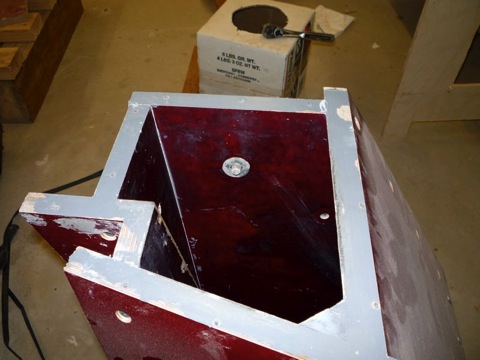
The assembly is nothing more than a coupling nut with a hex bolt with a nut threaded on exposing about 3/8” of thread then a washer and then it is tightened into the coupling nut.
A variation on the above method is to use threaded rod in place of the hex bolt.
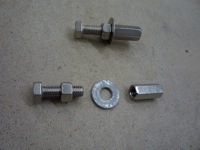
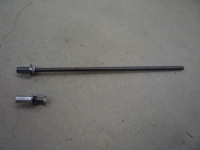
This assembly acts as a point to screw another part onto the casting and on the inside it acts as an anchor. These protrusions are a great place to lash down the rebar that will fortify the concrete. The amount of steel on the inside is hard to calculate but in general the more the better. There are certain forms that will not be stressed that require no steel.
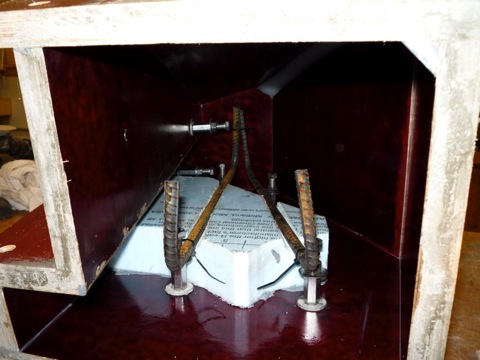
Once the casting is complete you will need to unscrew the hex bolts from the outside of the form. Then you can disassemble the form and extract the casting. Concrete shrinks a bit as it cures. The washer on the inside of the form insures that the coupling nut assembly is below the surface of the concrete. The washer has been knocked free in the picture below with the help of a nail set and a hammer. If you did not use the washer on the inside you would likely need to grind the head of the coupling nut flush. This trick saves a step.
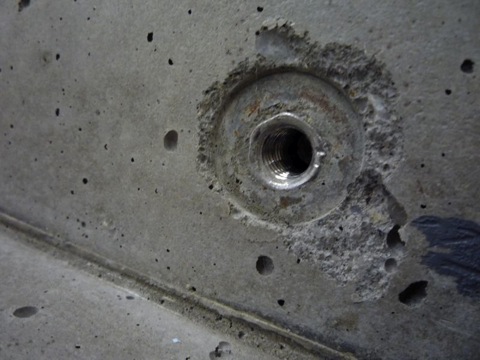
Here you can see the wooden element attached to the coupling nuts with cap screws.
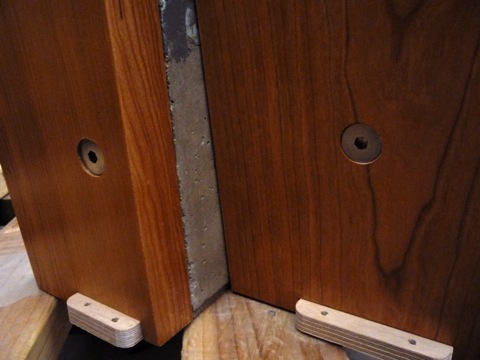

The assembly is nothing more than a coupling nut with a hex bolt with a nut threaded on exposing about 3/8” of thread then a washer and then it is tightened into the coupling nut.
A variation on the above method is to use threaded rod in place of the hex bolt.


This assembly acts as a point to screw another part onto the casting and on the inside it acts as an anchor. These protrusions are a great place to lash down the rebar that will fortify the concrete. The amount of steel on the inside is hard to calculate but in general the more the better. There are certain forms that will not be stressed that require no steel.

Once the casting is complete you will need to unscrew the hex bolts from the outside of the form. Then you can disassemble the form and extract the casting. Concrete shrinks a bit as it cures. The washer on the inside of the form insures that the coupling nut assembly is below the surface of the concrete. The washer has been knocked free in the picture below with the help of a nail set and a hammer. If you did not use the washer on the inside you would likely need to grind the head of the coupling nut flush. This trick saves a step.

Here you can see the wooden element attached to the coupling nuts with cap screws.

Previous: Geometric Casting
Next: Releases